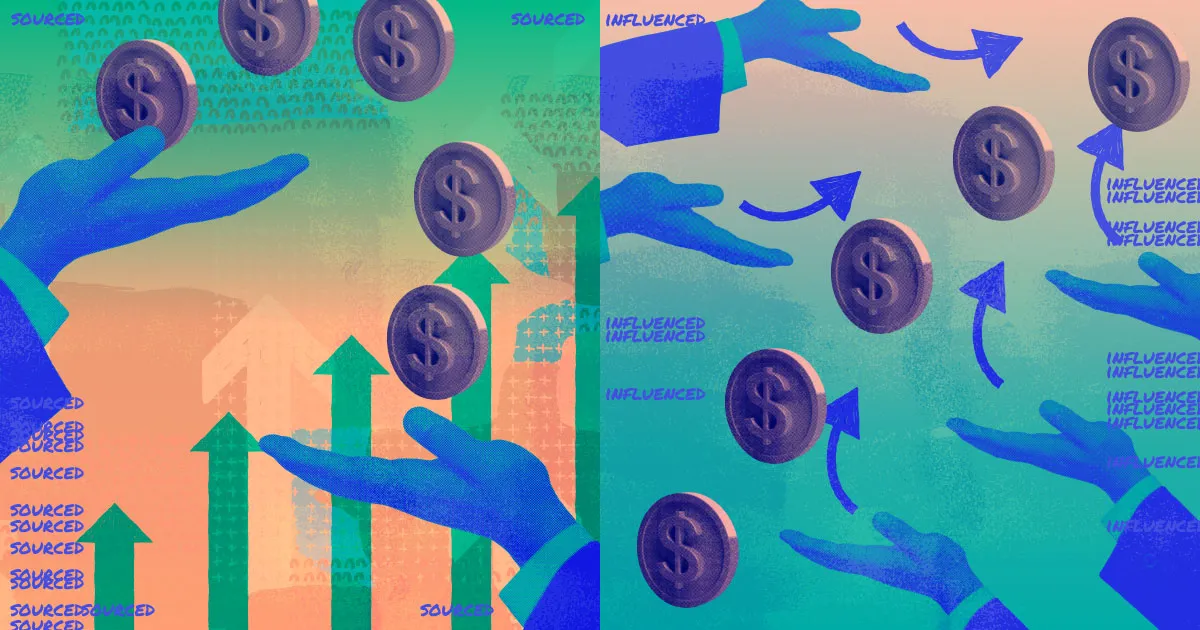Today’s B2B partnership landscape has seen just about everything evolve into an ecosystem. Why? Because it works.
SaaS companies adopting co-selling, a fairly new ecosystem-led sales motion, have seen deals close 46 per cent faster with a 53 per cent higher likelihood of closing.
In a flooded buyer’s paradise, co-selling has emerged as one of the most effective ways to cut through the noise and grab market share.
To understand the recent trend in co-selling partnerships, we chatted with Nicolette Lopes, Director of Channel Partnerships & Alliances at PartnerStack.
In this article, we will unpack:
- The evolution of co-selling as a sales tactic
- The signs your business is ready to co-sell
- The biggest benefits and challenges to keep in mind as you get started
Read on for everything you need to know about launching a co-sell partnership in 2024.
Understanding co-selling vs. reselling
Co-selling is a collaborative sales partnership where two or more companies join forces to sell their solutions together. Often conflated with reselling, co-selling partnerships operate entirely differently.
In a resell partnership model, partners sell a company's product directly to their customer and own the whole relationship in a singular sales motion. Co-selling partnerships are far more collaborative, with partners selling holistic lifecycle solutions to customers.
Co-selling allows companies in different categories to work together by solving multiple points along a customer journey. For example, consider a CRM (customer relationship management) software and a landing page builder. While they may be solving different challenges, they’re ultimately targeting the same customer and can benefit from this ecosystem-led approach.
Lopes explains, “Organizations are looking to get more integrated, and they're looking to do more co-selling wherever possible. So, it's really taken on this new shape. If we want to win business, we have to co-sell with organizations that we may not have done so with in the past.”

Related: What is co-selling in a partner ecosystem and how can you do it?
5 signs your business is ready to co-sell
Before diving headfirst into co-selling, Lopes shares some key signs to look out for to ensure a smooth kickoff.
Strategic alignment
Does your solution naturally fit with another product or service? Do your partnership goals align?
To ensure your products or services complement potential partners, Lopes suggests account mapping, “Account mapping is a really great way to understand, ‘do we have a lot of the same customers? Are there immediate opportunities right in front of us where we can get some early wins?’”
Account mapping is a visual process that involves “mapping” customer and partner data to get insights into which prospects might be most likely to buy.
For Lopes, strategic alignment also extends to partnership goals. “It's really important to not just see what success is for you, but what success is for your partner. If you both have the same goals, that’s when you identify there's a really good opportunity for co-selling,” Lopes shares.
Established marketing process
Does your marketing team know who their ICP is? Is your marketing team at a place where they can effectively position you in market?
Lopes shares, “I think less about the maturity of the sales team and more about if the marketing team is at the right place to support the partnership.” Lopes believes the best partners are agnostic, leaving the opportunity in the hands of the marketing team to “clearly communicate the ICP, go-to-market strategy, pricing, brand communications, and more.”
See more: Marketing channels to expand your business reach beyond Google.
Scalable solutions
Can your company handle the limelight? If a co-selling partnership takes off, are you prepared to scale your organization or product to meet the demand?
It is critical to ensure you have the resources, support systems, and processes in place to handle growth. Otherwise, you risk jeopardizing customer satisfaction and souring your relationship with your customers and co-selling partners.
Successful pilot programs
Have you tested the waters of co-selling with a pilot program? If you've already dipped your toes in and seen positive results, it’s a strong indicator to invest more time and resources into it.
Lopes thinks pilot programs are a great way to get initial feedback, but warns that many companies make the mistake of narrowing the time frame instead of the scope.
She goes on to explain, “Pilot programs will be a massive accelerator for your business, if you give them the time to be set up properly. A pilot should not be a few weeks or even a few months. A pilot should be minimum a year. The worst thing that you can do with partners is invest in them for a minute, and then pull back.”

You might also like: Avoid the most common partner program launch mistakes.
Technology infrastructure
Do you have the right tools in your co-selling toolbox? A robust tech stack that includes a PRM (partner relationship management) solution like PartnerStack simplifies every step of finding, managing, and scaling co-selling partnerships. PartnerStack also partners with some of the best account mapping solutions in the industry to help companies quickly identify the best opportunities within the ecosystem.
Biggest challenge in co-selling
Beyond strategic alignment and infrastructure, the biggest mistake Lopes sees with companies starting to co-sell is leaving the responsibility to their partners to sell the value of their company.
She notes, “Partners are not a direct sales team, they don't have obligations to your board or your shareholders. It's very important that you make it easy for your co-sell partners to work with you. They are working with you because it makes sense for their clients at that time.”
If your process causes friction or adds a bottleneck for a partner, they’ll be less likely to sell it. Lopes adds that businesses should “make it easy to tell the story of what you’re doing and how you’re winning to their customer success team, product team and their sales team.”
Co-selling isn't just a buzzword, it's a matchmaker for SaaS companies looking to expand their market reach and boost revenue. In today's competitive landscape, co-selling is becoming a necessity for SaaS companies looking to thrive. Lopes reflects on co-selling and its impact on the future of partnerships, sharing, “Organizations are realizing that they win better with their partners and I think this has been really great for the industry as a whole.”
Biggest benefits of co-selling
Fully buying into co-selling and ecosystem-led sales offers major benefits to B2B SaaS companies.
First, unlike reselling, co-selling allows companies to have a level of control over how their solution is presented. Second, by working collaboratively and joint selling, companies can tap into new audience pools and expand their market reach.
The biggest benefit by far, and most convincing for stakeholders, is the ability for co-selling partnerships to drive more revenue. Lopes thinks of it as tapping into a flywheel. By teaming up with ecosystem partners, co-sellers can bring their solutions to market faster, streamlining the sales cycle and driving revenue for all partners involved.
“A co-sell motion that feels organic is going to help both teams win business faster, more consistently and more effectively,” notes Lopes.

















